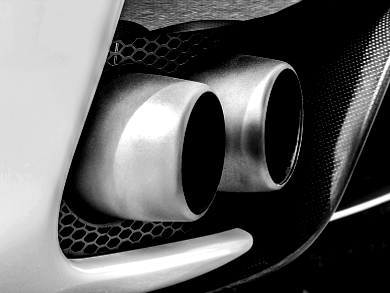Cars, trucks, and buses increasingly pollute the environment and raise Particulate matter levels, particularly in urban areas. In the long term, this can lead to health problems such as asthma, cardiovascular problems, and lung cancer.
Joshua Miller, International Council on Clean Transportation, Washington D.C., USA, and colleagues have evaluated 30 studies that had determined exhaust emissions from vehicles under real driving conditions from eleven important vehicle markets, including the USA, Australia, Brazil, China, Russia, and the European Union. Together, these regions accounted for 80 % of all new registrations of diesel vehicles in 2015.
The analysis showed that in 2015 alone, diesel-powered vehicles released approximately 13 million tonnes of nitrogen oxides in these eleven regions. This contributes significantly to particulate matter (PM2.5) and ozone pollution. A comparison with the exhaust gas regulations in the studied regions showed that if the cars had actually produced only as many emissions as permitted, about 4.6 million tonnes less of the harmful gases would have been puffed into the air.
According to the researchers, 76 % of the additional nitrogen oxide emissions are released by heavy commercial vehicles such as trucks and buses. 90 % of these exhaust gases stem from just five markets – Brazil, China, the European Union, India, and the USA.
70 % of excess nitrogen oxide emissions from lighter vehicles such as cars and transporters have been produced in the EU. On average, diesel cars, which are widely used in the EU, exceeded the permissible values in real-world operating conditions by 2.3 times, even though they had been certified to conform to exhaust emissions in certification tests. The exhaust gas values measured in tests often differ significantly from the actual emissions in the regular operation on the road. This might be caused by built-in cheating software, maintenance errors, manipulations, or simply faulty test procedures.
With computer models, the team calculated what these results mean for public health. People in China are affected worst. 31,400 people die prematurely every year from the effects of nitric oxide exposure. 10,700 of these deaths are based on surplus emissions beyond the established standards, according to the team’s analyzes.
In Europe, diesel vehicles cause 28,500 premature deaths annually. For 11,500 of these deaths, increased exhaust gas emissions are responsible, according to the researchers. Overall, in 2015, 107,600 people died of diesel-related diseases worldwide. In 2040, according to the model calculations, it could be around 180,000.
The work shows that the problem goes far beyond cheating software and shutdown devices. Even without cheating, the values determined in tests often do not correspond to reality. Only when testing different speeds, driving styles, and external conditions such as temperatures, the results could become more accurate in the future. For the researchers, this is one of the most urgent concerns for the near future, in addition to further restricting the internationally permitted limits.
- Impacts and mitigation of excess diesel-related NOx emissions in 11 major vehicle markets,
Susan C. Anenberg, Joshua Miller, Ray Minjares, Li Du, Daven K. Henze, Forrest Lacey, Christopher S. Malley, Lisa Emberson, Vicente Franco, Zbigniew Klimont, Chris Heyes,
Nature 2017.
DOI: 10.1038/nature22086




